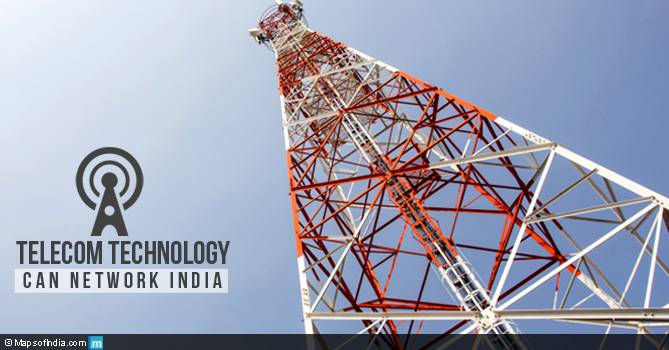Indian telecom industry, the second largest network after China on the basis of the number of the total telephone (both mobile and fixed line) subscribers, has come a long way which has shown positive developments and a phenomenal growth over the last decade. In providing the world’s lowest call tariffs, there is a strong competition among the major telephone networks. After the entry of Smartphone in the Indian markets, the number of users of internet services through mobiles has gone up steeply. By the end of June 2013, the internet subscribers’ number scaled up to 190 million, according to the Internet and Mobile Association of India (IAMAI).
In the last decade, India had grown more than 20 times in the telecom sector which has established the country as the most competitive and fastest growing telecom market in the world. By May 2012 India’s numbers of mobile phone subscribers have grown over 929.37 million which has placed India in the second position in the world. In case of the internet subscriber base India ranks third in the world as of July 2014, with more than 243 million users.
Liberalization of telecom services
Deregulation of the telecom sector in 1992 was the stepping stone of liberalization in telecom services before which the Government had full monopoly on these services. The Indian telecom industry faced a lot of hardships and challenges to liberalize this sector as there was an active participation of private sector in the industry which was fully monopolized by the Government.
Telecommunication being one of the prime contributors in the socio-economic growth of a country all over the world, has had a great impact in India too. Telecom which is one of the fastest growing industries in India plays a definite role in various sectors for the economic growth and development. The teledensity of the country which has increased by leaps and bounds and the rapid decline of tariffs with strong competitions among the service providers in the Indian telecom sector, has led to a significant contribution of 5.3% of India’s GDP.
Looking at the great acceleration in the growth and development of economic and social sectors, the National Telecom Policy (NTP 2012) has been formulated. It has been designed in such a way that our country evolves and emerges into a knowledge base and empowered nation with telecommunications and information technology as a base.
Telecom service which is an urgent need of today’s rural India, has a great potential. About 2,50,000 gram panchayats will be provided high quality and high speed broadband connectivity through optic fibre as the Government of India has approved building of a National Optical Fiber Network (NOFN). Thereafter it will be provided to all the villages and residences by 2020. If this target is achieved then all the people who are staying in the rural India will be able to take part in e-governance in the prime sectors like banking, health, education, administration etc. India needs to expedite the process very fast so that it can take the full advantage of the new telecom technology.
Raising quality and reach of learning: Education is not a fully developed sector in India due to high dropout rate and lack of quality education. It is also a challenging task to impart education in the remote areas. If telecom access is provided in the educational sector the quality of learning can be improved and the advanced use of telecom technology can bring immense changes in these areas. To impart higher quality of education to the masses, the two-way interactive methods of computer and networking, which includes interactive multimedia combination of video, data and voice in text as well as graphics, can be of great help.
Telemedicine for healthcare: Healthcare system in India is far behind that of its global counterparts. So to improve the quality in the Indian healthcare sector, the telecom industry aided by other related technologies can contribute a great deal with the development of telemedicine. Being the second most populous country in the world, technology needs to be used by the vast population. Though technology cannot take over doctor appointments completely it has been observed that people find it very much comfortable to interact with their doctors by using technology.
A revolution in bank operations: The functioning of banks and insurance companies has witnessed a total evolution after the introduction of the technology in this sector in the last 15 years which has not only helped in their efficiency but also amplified the customers’ satisfaction level. Mobile banking, ATM channel and internet banking are the buzz words of today’s financial scenario in our country which has completely transformed the operational process in this sector. That is why most of the banks are concentrating on digital banking and self service channels.
By utilizing telecom technologies we can face the challenges and can bring an end to the many problems which are prevalent in a billion-plus country like India. This technology can enable stupendous growth by reaching to all sections and strata of the society, enabling India attain a high point in global positioning both socially and economically.
Read More:
All You Need to Know About Net Neutrality
DoT opposed to Facebook’s Internet.org – What is Internet.org?
Are we too dependent on computers, technology and Internet ?
Internet Of Things – New Devices for Remote and Sensory Applications
India Ranks Third in Cyberbullying: What Needs to Be Done
E-commerce – Indians set to spend more






